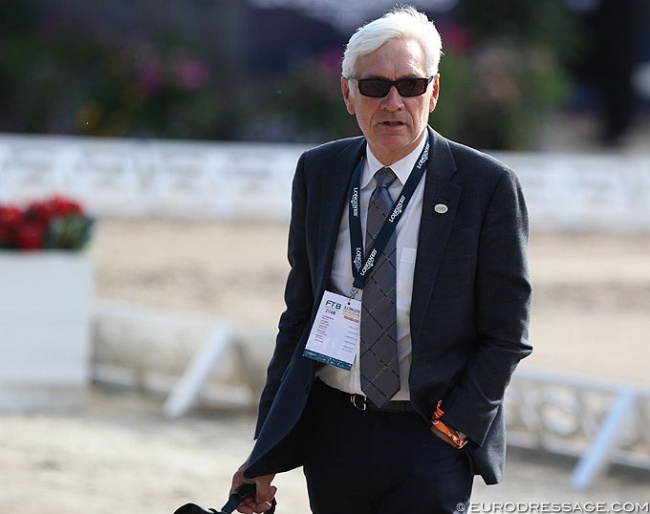
The rider must be balanced for the horse to balance itself and the horse must balance itself to establish lightness and self carriage. There is so much to the concept, the concept of balance and self- carriage, collection and engagement. And it all starts with the half-halt.
How does a rider establish a half halt? It starts with a concept that I call the “stop/go buttons” and it is established at the start of every ride. It is the first thing a rider checks when they enter the arena. “Is my horse coming to halt on a light aid from my seat, and is he moving off into walk off a light leg aid?” Once this is established the horse is waiting for the rider and is tuned In to the rider’s seat.
So how do we see if a horse is in balance and is showing self-carriage and lightness in front?
Danish 5* judge Leif Törnblad agrees that it all begins with a half halt. He states that there are many things to look for to know if the horse is being ridden in balance and self-carriage.
“If you can see that the rider is making an effective half halt and the horse reacts with more engagement of the hind legs and becomes lighter in the front with the nose clearly in front of vertical, the rider is on the right track, “ said Leif. “In the pony test we have a lot of transitions from canter to walk and from medium trot/canter to working or collected movements. If the pony does these transitions well, meaning stays soft in the hand with the nose in front of vertical, then we say the horse is in good balance.”
Leif advises that at the same time we must look to see that the hind legs are coming under the horse and are acting as the engine, thus establishing forward and uphill transitions.
“I find the pony tests very good because there are a lot of transition marks in these tests,” added Leif.
At the higher levels Leif says we have to look more at transitions from extended to collected trot and canter and from canter/trot to walk.
“When it comes to pirouettes, shoulder-in and half passes, we look at how the inside leg is taking more weight and if the contact on the bit stays light and with a mouth that is shut. Nose has to be in front of vertical all the time to show balance and self-carriage,” Leif explained.
For those who want to know the signs that this is not the case, Leif notes a few of the more obvious things to watch for: “The nose will be coming or staying behind the vertical, there will be resistance on the bit and an open mouth. The croup will be high in the transitions and movements and we may notice short and hurried steps/strides with the hind legs of the horse.”
So how do we know if we are on the right track? First we must have ourselves balanced In the saddle. Then we must have those stop/go buttons properly established. When we relax the aids the horse must go alone. We should use our seat to balance the horse (half halt) during the movements without needing to pull on the reins. We should "feel the engine," as Leif calls it, in the hind legs and the transitions must come from back to front.
And finally we must read the above list from top level judges such as Leif and ask ourselves if we can tick all these boxes.
by Sarah Warne - Photo © Astrid Appels
Related Links
Classical Training: Starting From Square One
Classical Training: Balanced Consistency
Classical Training: The Balancing Act that is Called Dressage
Leif Tornblad, a Special Back to Back
Wüst, Törnblad and Roudier New O-Judges